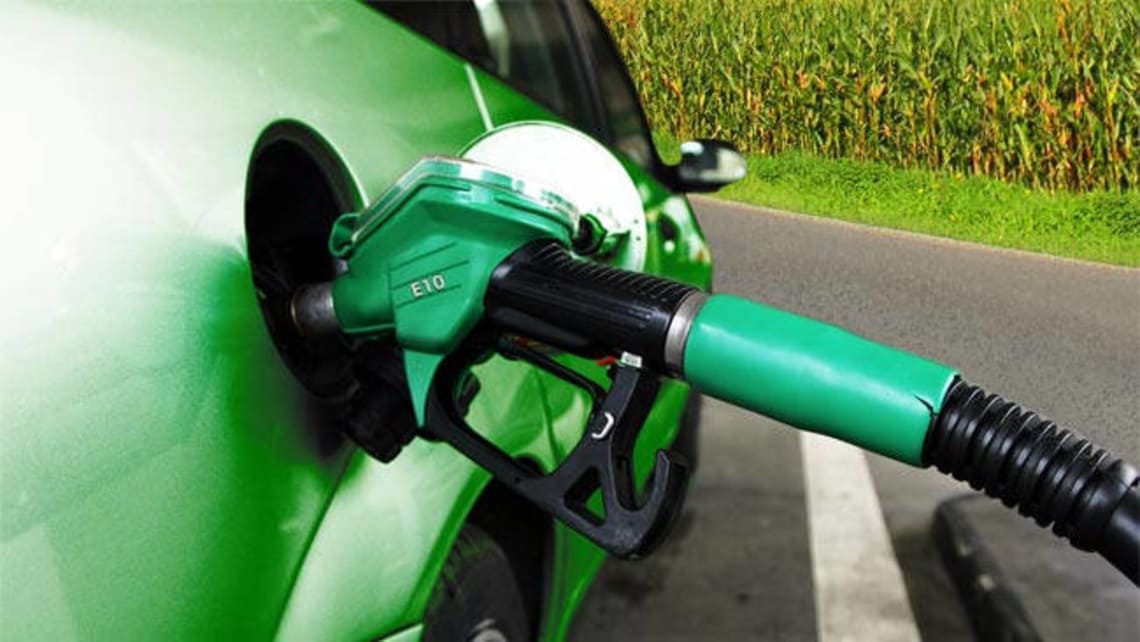Ethanol is one of many alcohols. Specifically it is ethyl alcohol — the same alcohol that is in alcoholic drinks like wine, beer, and whiskey. Commonly made from the fermentation of various grains, it is sometimes called grain alcohol. Ethanol has many chemical and physical properties that make it desirable for industrial uses as a solvent in medicines or fragrances since it is generally not harmful when it contacts the skin or ingested in small quantities.
Ethanol is Easily Produced from Grains or Pure Sugar
The production of ethanol dates back to antiquity. Humans realized that the fermentation of fruits and grains produced substances similar to modern beers and wines which produced a relaxing intoxicating effect.
The modern production of ethanol from corn differs from the ancient method in the ability to concentrate the ethanol to nearly 100%. Modern plants are high-tech moonshine stills that produce a cleaner product in large quantities.
Moonshiners use sugar to produce a reasonably high percentage of alcohol. As a beverage, it is of questionable purity and taste and sometimes deadly due to impurities, but they achieve over 90% ethanol.
Ethanol as a Fuel
The use of ethanol as a fuel is nothing new either. It was used in lamps before electricity or kerosene. Ethanol produces less heat energy than gasoline which results in a lower mileage per gallon. Ethanol in the U.S is mixed with gasoline and often sold as “gasohol” which contains 10% to 15% ethanol.

The interest in ethanol as a fuel was considerably enhanced by the Arab oil embargo of the 1970s. The dependence of the U.S. on foreign energy sources became clear, and long lines at gas stations created a visual awareness of the need for alternative energy. Ethanol production has increased as U.S. dependence on foreign resources has increased — about two-thirds of U.S. crude oil is now imported.
Brazil produces large amounts of ethanol from sugar cane and all cars in the country run on gasohol containing up to 25% ethanol. Brazil and the U.S. produce about 88% of the world’s ethanol. The U.S. produced over 13 million gallons of ethanol in 2010.
Limitations of Ethanol as a Fuel
Ethanol may help the fuel crisis in the U.S., but it is not likely to make significant contributions until certain issues have been resolved. Among these are:
- Corn is the preferred source of ethanol in the U.S. This reduces the availability of corn as a food product and livestock food and increases the price of corn and its products.
- Ethanol can damage plastic parts in the fuel system.
- Water produced by ethanol combustion and by the absorption of ethanol can contribute to rust.
- Ethanol produces about one-third less energy than gasoline reducing gas mileage as the amount of ethanol is increased in gasohol.
- Higher concentrations of ethanol in gasoline can lead to difficulty in starting engines especially in cold weather.
- Substantial amounts of energy are used to produce ethanol, although it produces more than is used.
The Future of Ethanol
The future use of ethanol in cars in the U.S. is uncertain. That its use will continue on some scale seems certain. It does reduce U.S. dependence on imports and lowers the cost of gasoline at the pump by $0.14. Oil imports would be perhaps 4% higher without ethanol. Tens of thousands of jobs have been generated by the ethanol industry. Over 100,000 jobs are currently supported by ethanol production.
The real boost to the use of ethanol and its effect on the economy will come when cellulosic ethanol can be economically produced. Cellulose is the woody material from which plant cell walls are made. Bacteria do a pretty good job of turning cellulose into ethanol, but the industry has yet to produce cellulosic ethanol economically.
When and if large-scale production of cellulosic ethanol becomes feasible, then many common plants — grasses and weeds — could be used to produce ethanol and grain will not be necessary.
Ethanol is easily made by fermentation. Its use as a fuel has been know for centuries, but high performance automobiles cannot function well on more than 20% ethanol mixed with gasoline. Ethanol produces less energy than gasoline, can damage some car parts, and increases the price of corn and its products. The use of ethanol as a truly economic fuel awaits the cheaper production of cellulosic ethanol.